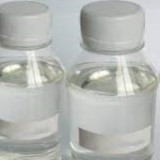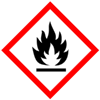Formic Acid SDS MSDS of Manufacturers & Exporters
Please visit Formic Acid USP NF ACS BP Ph Eur EP JP IP Analytical reagent FCC Food grade Manufacturers our associates world class FDA-GMP approved, ISO-9001 Certified facility Anmol Chemicals

Formic Acid or Methanoic acid CAS Number 64-18-6
Formic Acid or Methanoic acid SDS GHS, Safety Data Sheet
MSDS Sheet, Material Safety Data Sheet 15-Aug-22
1. Product Identification
Product Name & Other Names: Formic Acid or Methanoic acid.
CAS No.: 64-18-6
EINECS EC No.: 200-579-1
Molecular Formula: CH2O2
Molecular Weight: 46.03
Relevant uses and uses advised against (if any): Industrial Manufacturing.
Suppliers: As per letterhead.
2. Hazards Identification
GHS, Globally Harmonized System Classification in accordance with 29 CFR 1910
Hazard Class and Category Code(s), Regulation (EC) No 1272/2008 (CLP):
Flammable liquids (Category 3) H226
Acute toxicity, Oral (Category 4) H302
Skin corrosion (Category 1A), H314
Acute toxicity, Inhalation (Category 3) H331
Labeling according Regulation (EC) No 1272/2008
GHS Label Elements

Toxic |
GHS Label Elements

Flammable |
GHS Label Elements

Corrosive |
Signal Words: Danger
Hazard statements:
H226: Flammable liquid and vapor.
H302: Harmful if swallowed.
H314: Causes severe skin burns and eye damage.
H331: Toxic if inhaled.
EUH071: Corrosive to the respiratory tract.
Precautionary statements:
P210: Keep away from heat/sparks/open flames/hot surfaces – No smoking.
P233: Keep container tightly closed.
P240: Ground/bond container and receiving equipment.
P241: Use explosion-proof electrical/ventilating/light/---/equipment.
P242: Use only non-sparking tools.
P243: Take precautionary measures against static discharge.
P261: Avoid breathing dust/fume/gas/mist/vapors/spray.
P264: Wash --- thoroughly after handling.
P270: Do not eat, drink or smoke when using this product.
P271: Use only outdoors or in a well-ventilated area.
P273: Avoid release to the environment.
P280: Wear protective gloves/protective clothing/eye protection/face protection.
P312: Call a POISON CENTER or doctor/physician if you feel unwell.
P330: Rinse mouth.
P362: Take off contaminated clothing and wash before reuse.
P391: Collect spillage.
P301+310: IF SWALLOWED: Immediately call a POISON CENTER or doctor/physician.
P302+352: IF ON SKIN: Wash with soap and water.
P303+361+353: IF ON SKIN (or hair): Remove/Take off immediately all contaminated clothing. Rinse skin with water/shower.
P304+340: IF INHALED: Remove victim to fresh air and keep at rest in a position comfortable for breathing.
P305+351+338: IF IN EYES: Rinse cautiously with water for several minutes. Remove contact lenses if present and easy to do – continue rinsing.
P370+378: In case of fire: Use water spray or fog for extinction.
3. Composition/Information on Ingredients
Product Name & Other Names: Formic Acid or Methanoic acid.
CAS No.: 64-18-6
EINECS EC No.: 200-579-1
4. First Aid Measures
Always seek medical attention after first aid measures are provided.
Inhalation: Remove to fresh air. If not breathing, give artificial respiration. If breathing is difficult, give oxygen. Get medical attention.
Ingestion: Never give anything by mouth to an unconscious person. Get medical attention.
Skin Contact: Wipe off excess material from skin then immediately flush skin with plenty of water for at least 15 minutes. Remove contaminated clothing and shoes. Get medical attention. Wash clothing before reuse. Thoroughly clean shoes before reuse. Get medical attention.
Eye Contact: Immediately flush eyes with plenty of water for at least 15 minutes, lifting lower and upper eyelids occasionally. Get medical attention immediately.
Notes to Physician: Treat symptomatically.
5. Fire Fighting Measures
Flammability of the Product: Flammable.
Suitable extinguishing media: Carbon dioxide (CO2). Extinguishing powder. Water spray (fog). Alcohol resistant foam.
Auto-Ignition Temperature: 520.
Flash Points: 50C
Products of Combustion: Carbon dioxide, Carbon monoxide, Toxic fumes.
Fire: Inflammable.
Explosion: Cool containers with flooding quantities of water until well after fire is out. Prevent fire extinguishing water from contaminating surface water or the ground water system. Explosive in presence of heat.
Fire Extinguishing Media: Use water spray or fog. Flammable liquid and vapor. Vapors are heavier than air and may travel to a source of ignition and flash back. Vapors can spread along the ground and collect in low or confined areas. Never direct a water jet in the container to prevent any splashing of the product which could cause spreading of the fire. Cool containing vessels with water jet in order to prevent pressure build-up, auto-ignition or explosion.
Special Information: In the event of a fire, wear full protective clothing and NIOSH-approved self-contained breathing apparatus with full face piece operated in the pressure demand or other positive pressure mode. At high temperatures under fire conditions, it may produce toxic or irritating fumes. Keep away from sources of ignition. Prevent fire fighting water from entering surface water or groundwater.
6. Accidental Release Measures
Personal precautions, protective equipment, and emergency procedures: Avoid breathing dust/fumes/gas/mist/vapors/spray. Use individual protective equipment (waterproof boots, suitable protective clothing, safety glasses, etc.). Do not approach facing the wind.
Environmental precautions: Do not let the product enter drains, soil, or water sources.
Methods and materials used for containment Cleanup procedures and Storage:
Small Spill: Avoid mist formation. Avoid breathing mist. Ensure adequate ventilation. Use appropriate tools to put the spilled solid in a convenient waste disposal container.
Large Spill: Do not inhale dust, vapors, mist, or gas. Avoid dust formation. Contain spilled material. Cover with an inert, non-combustible absorbent material, (e.g. sand, earth, diatomaceous earth, vermiculite). Use a shovel to put the material into a convenient waste disposal container.
Large liquid spillages should be contained by use of sand or another inert material. Dyke to collect large liquid spills. Pump up the product into a spare container suitably labeled. The spillage should be transferred to a suitable container and recovered or disposed of in accordance with local regulations. Because of the danger of spontaneous combustion, any combustible material, such as cloth, used for cleaning spillages, should be saturated with water, and disposed of promptly, preferably by incineration.
7. Handling and Storage
Precautions for safe handling: Do not ingest. Apply according to good manufacturing and industrial hygiene practices. Ensure proper ventilation. In case of insufficient ventilation, wear suitable respiratory equipment. Wash thoroughly after handling. Do not drink, eat, or smoke while handling. Avoid contact with skin, eyes, and clothing. Minimize dust generation. Avoid breathing dust/fumes/gas/mist/vapors/spray. Keep container tightly closed. Avoid ingestion and inhalation. Use individual protective equipment (waterproof boots, suitable protective clothing, safety glasses, etc.).
Conditions for safe storage, including any incompatibilities: Store in cool, dry, and ventilated area away from heat sources and protected from sunlight in tightly closed original container. Keep air contact to a minimum. Store protected from heat, sparks and ignition sources and incompatible materials. Avoid contact with skin and eyes. Avoid inhalation of dust/mist/vapor. Do not store with incompatible materials like strong oxidizing agents, strong reducing agents, strong acids, strong bases.
8. Exposure Controls/Personal Protection
Airborne Exposure Limits:|
USA ACGIH TLV: TWA: 5 ppm; STEL: 10 ppm
USA OSHA PEL: (Vacated) TWA: 5 ppm, (Vacated) TWA: 9 mg/m3; TWA: 5 ppm, TWA: 9 mg/m3
Ventilation System: A system of local and/or general exhaust is recommended to keep employee exposures as low as possible.
Personal Respirators (NIOSH Approved): For conditions of use where exposure to dust or mist is apparent and engineering controls are not feasible, a particulate respirator may be worn.
Skin Protection: Wear protective gloves and clean body-covering clothing.
Eye Protection: Use chemical safety goggles and/or full face shield where dusting or splashing of solutions is possible. Maintain eye wash fountain and quick-drench facilities in work area.
Other Control Measures: Maintain good housekeeping in work area. Handle in accordance with good industrial hygiene and safety practice. Wash hands after handling.
9. Physical and Chemical Properties
Appearance: Colorless fuming liquid.
Odor: Pungent, penetrating.
Odor threshold: Not available.
pH: around 2.
Relative density: about 1.22
Melting point: 8C literature.
Boiling point: 101C literature.
Flash point: 50C literature. (Lowest of the reported).
Auto-ignition temperature: >500C literature.
Decomposition temperature: 350 C
Upper/lower flammability or explosive limits: No information found.
Vapor pressure: No information found.
Vapor density: No information found.
Evaporation rate: No information found.
Flammability (solid, gas): No information found.
Partition coefficient: n-octanol/water: No information found.
Solubility: It is miscible in water.
Viscosity: No information found.
Molecular Formula: CH2O2
Molecular Weight: 46.03
10. Stability and Reactivity
Stability: Stable under ordinary conditions of use and storage. Vapors may form explosive mixture with air. Contact with metals may evolve flammable hydrogen gas. Reacts with: Strong bases, Oxidizing substances. Mixtures with high formic acid content can decompose spontaneously and create overpressure and receptacle burst. Sunlight and heat will increase the risk of decomposition.
Hazardous Decomposition Products: It emits Carbon dioxide, Carbon monoxide, Toxic fumes.
Hazardous Polymerization: Will not occur.
Incompatibilities: Strong oxidizing agents, strong reducing agents, strong acids, strong bases.
Conditions to Avoid: Incompatibles, oxidizing agents, strong alkalis, strong acids, heat & light.
11. Toxicological Information
Toxicity data
ORAL-RAT LD50 730 mg/kg
INHALATION-RAT LC50 7.4 mg/l 4 hours.
Carcinogenicity: CAS# 105-39-5: Not listed by ACGIH, IARC, NTP, or CA Prop 65.
Epidemiology: No information found
Teratogenicity: No information found
Reproductive Effects: No information found
Mutagenicity: No information found.
12. Ecological Information
Environmental Toxicity:
Toxicity to fish: LC50 - Leuciscus idus (Golden orfe) - 46 - 100 mg/l - 96 h.
Toxicity to daphnia and other aquatic invertebrates: EC50 - Daphnia magna (Water flea) - 34,2 mg/l - 48 h.
BOD5 and COD: Not available. The product is expected to have high BOD.
Products of Biodegradation: Possibly hazardous short term degradation products are not likely.
Persistence and Degradability: Miscible with water Persistence is unlikely based on information available.
Mobility: Will likely be mobile in the environment due to its water solubility.
13. Disposal Considerations
Whatever cannot be saved for recovery or recycling should be managed in an appropriate and approved waste disposal facility.
14. Transport Information
DOT USA Classification:
Shipping Name: FORMIC ACID
UN Number: UN1779
Hazard Class: 8(3), Packing Group: II
Canada TDG Classification:
Shipping Name: FORMIC ACID
UN Number: UN1779
Hazard Class: 8(3), Packing Group: II
IATA & ADR/RID Europe
Shipping Name: FORMIC ACID
UN Number: UN1779
Hazard Class: 8(3), Packing Group: II
15. Regulatory Information
USA:
SARA 311/312 Hazards: As per section 2.
California prop. 65: Not listed.
16. Other Information
Disclaimer:
**************************
Our company provides this MSDS sheet in good faith but makes no representation as to its comprehensiveness or accuracy. This SDS sheet is intended only as a guide to the appropriate precautionary handling of the material by a properly trained person using this product. The above information has been compiled from various sources and has the possibility of discrepancy and being out-dated information. Individuals receiving the information must exercise their independent judgment and do further search in determining its appropriateness for a particular purpose. In no case shall our company be liable to loss or damages by the product user.
**************************
Specifications of Formic Acid BP Ph Eur EP JP USP NF IP ACS Analytical Reagent FCC Food grade Manufacturers |








